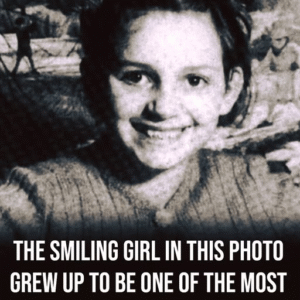Have you ever looked up at the sky and spotted a cloud shaped like a dog? Or noticed a face smiling back at you from a power outlet, a car’s headlights, or even your morning toast? If so, you’ve experienced pareidolia — the brain’s tendency to find familiar patterns, especially faces, in random objects.
Scientists have long been intrigued by this phenomenon. While it might seem like a simple trick of the mind, pareidolia reveals a lot about how our brains work and why humans are wired to see meaning in almost everything.
Our Brains Are Pattern-Detection Machines
At the heart of pareidolia lies our brain’s instinctive desire to make sense of the world. We’re natural pattern seekers. The brain constantly scans for order amid chaos, connecting shapes, shadows, and outlines to known forms.
A key player in this process is a region of the temporal lobe responsible for facial recognition. This area helps us quickly identify friends, family, and—on a more primal level—potential threats. From an evolutionary standpoint, recognizing faces (and, by extension, hidden predators) could mean the difference between survival and danger.
The Role of Confirmation Bias
Pareidolia isn’t just about brain wiring—it’s also influenced by expectation. If you’re actively looking for shapes in clouds, you’re more likely to find them. Likewise, that “holy face” on a piece of toast might go unnoticed until someone points it out. This is confirmation bias at play: once our minds latch onto an idea, we subconsciously look for evidence to support it.
When the Mind Sees Motion: Kinetic Pareidolia
Sometimes pareidolia goes a step further. Motion pareidolia, or kinetic pareidolia, happens when we think we see movement that isn’t there—like a shadow shifting in the corner of your eye. This occurs when the brain tries to fill in gaps in visual information, a phenomenon that becomes more common when we’re tired or in low light.
It’s that eerie moment when “your eyes play tricks on you.” But really, it’s just your brain doing its best to interpret incomplete data.
Primed to See Faces
Kang Lee, a professor of applied psychology at the University of Toronto, has studied how our brains process faces for years. His research shows that we often “see” faces before we consciously recognize them.
“The inferior frontal gyrus is an intriguing area related to generating ideas and instructing the visual cortex to recognize them,” Lee explains. “If the idea is a face, the brain will perceive it as such. If it’s Jesus, the cortex is likely to see Jesus. If it’s Elvis, then it will see Elvis.”
In other words, what we expect to see shapes what we do see.
Why We Assign Emotion to Objects
Our brains don’t just recognize faces—they give them personalities. Think about how easily we interpret emotion from simple shapes: a colon and parentheses become 

This emotional projection helps explain why we find comfort (or unease) in seeing faces where none exist. It’s part of how humans relate to the world—by humanizing it.
The Man in the Moon and Other Famous Faces
One of the most famous examples of pareidolia is the “Man in the Moon.” For centuries, people around the world have seen a face on the Moon’s surface, formed by dark volcanic plains called maria contrasting with lighter highlands.
“In terms of the Moon’s ‘face,’ it features the most recognizable elements from Earth,” explains planetary scientist Ya Huei Huang of MIT. “The maria were formed by volcanic eruptions flooding large basins.”
Religious pareidolia is another common theme. From Jesus on toast to Mary in a tree trunk, people have long found divine figures in everyday objects—a reminder of our deep desire to find meaning and connection in the ordinary.
Seeing Faces Everywhere
According to Kang Lee’s research, inducing pareidolia is surprisingly easy. In one of his studies, participants reported seeing faces about 34% of the time, even in completely random gray static.
So next time you’re out for a walk or cooking breakfast, take a look around. You might spot a “face” staring back at you—from a car, a house, or even your coffee mug.
Who knows? Once you start looking, you might realize the world is full of hidden expressions—proof that the human brain never stops searching for meaning.




